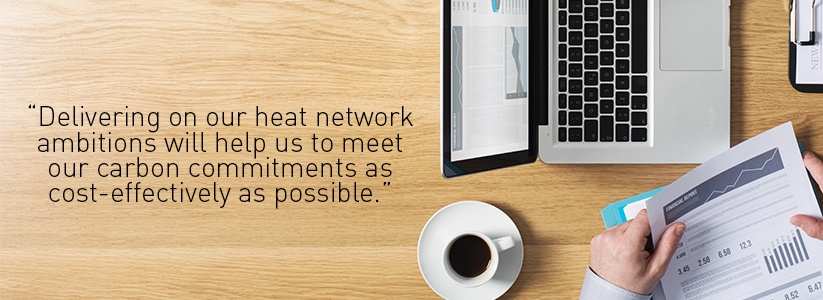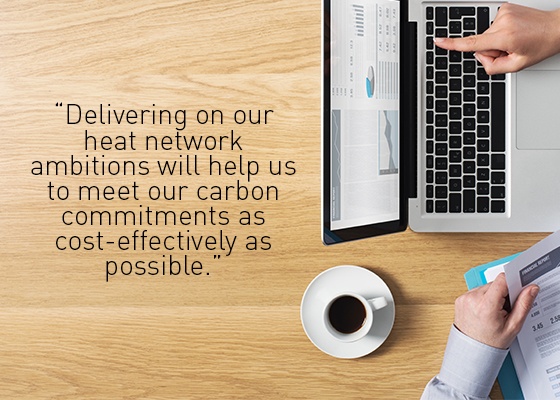A new report published by the Association for Decentralised Energy (ADE) shows how low carbon community heating networks could succeed without subsidy from 2021.

According to ADE, this could be created through a low-cost investment framework for community heating infrastructure - similar to that of water, gas and power distribution networks. As a result, large investors would be in a better position to consider these different infrastructure assets in the same way - helping drive down community heating costs for consumers.
The ADE report, Levelling the playing field: Unlocking heat infrastructure investment, sets out three key proposals:
- Provide a guarantee to reduce the risk to investors of future heat connection capacity - levelling the playing field with other energy networks. Such a guarantee would lower the cost of capital for projects, and so reduce the cost of heat for customers.
- Treat district heating networks in the same way as electricity and gas infrastructure when it comes to business rates. Currently they are far higher, increasing heating bills by as much as 20%, or up to £300 a home. These punitive costs deter low carbon investment and can be particularly damaging when projects are aimed at cutting fuel poverty.
- Extend and expand the role of the government’s Heat Networks Delivery Unit to support planning and delivery. The unit’s initial limited budget of about £10m has already resulted in over 200 projects being explored - revealing a latent interest from local authorities.
The ADE said the three measures would, “help attract lower-cost investment by reducing heat network capital risk, lower network costs by creating a fairer tax regime, and provide local authorities with the support they need to move forward with new network investments.”
The policy proposals would build on an industry framework to protect customers and investors, including the UK’s first independent heat customer protection scheme and the ADE/CIBSE Code of Practice.
The report also calls for low-carbon heat sources to be included in the Renewable Heat Incentive (RHI) from 2021, and that district heating companies are provided with the same access rights (for building works) as other utilities. This should encourage local authorities to consider district heating in planning processes.
Dr Tim Rotheray, Director of the ADE, said: “By levelling the playing field between heat and other types of networks, we can achieve best value, low carbon heating for thousands of homes around the UK without the need for subsidy.”
“All other UK network infrastructure have clear investment frameworks to secure low cost capital investment. An investment framework for heat networks has the potential to reduce investor risk, drive down the cost of heat supply, and attract major international and UK investors.
“Delivering on our heat network ambitions will help us to meet our carbon commitments as cost-effectively as possible, return control over energy to local authorities and their communities, and generate jobs and value to local areas across the UK.”
Government estimates there are £2 billion in district heating investments under consideration in more than 150 local authorities, with the technical potential for community heating to meet up to 20% of the nation’s heating needs by 2030.
- New ADE report shows how community heating is at a disadvantage to other energy networks.
- It shows that by levelling the playing field community heating would not need subsidies.
- The report makes three key recommendations, which would reduce the cost of capital and bring business rates in line with other energy networks, while improving government planning advice.
- The report also calls for improved works access rights, and that low-carbon heat sources are included in the Renewable Heat Incentive from 2021.
- The ADE claims the new investment framework would reduce investor risk, drive down the cost of community heat supply, and attract major investors.



